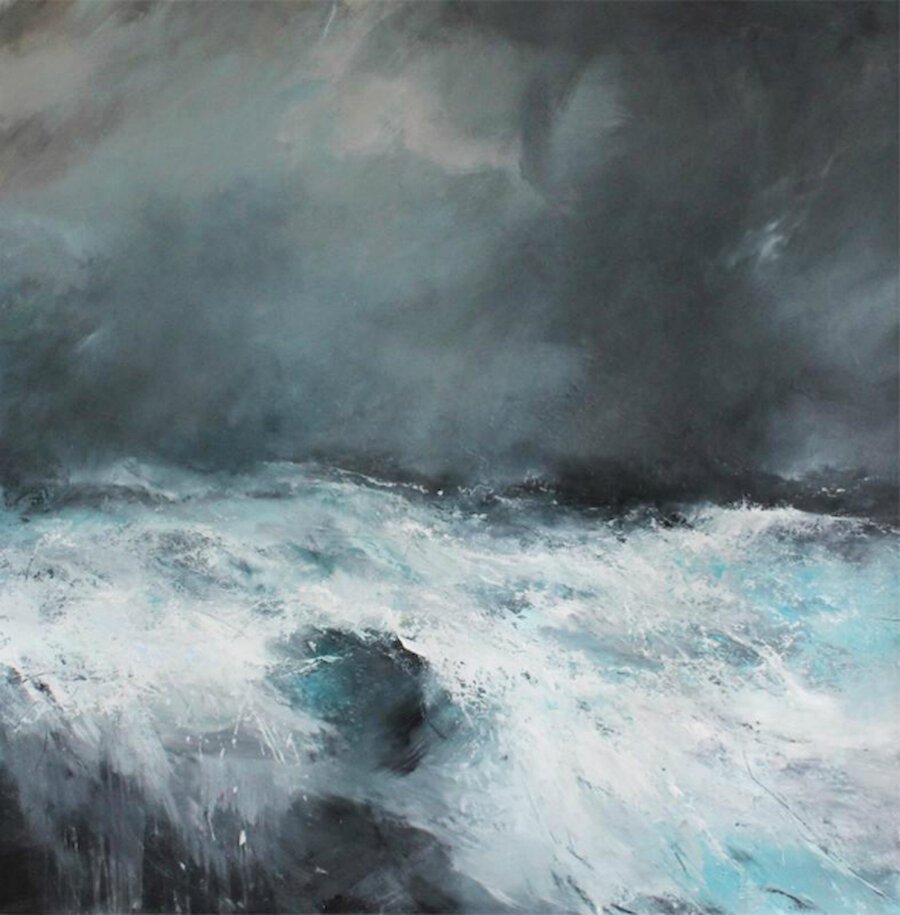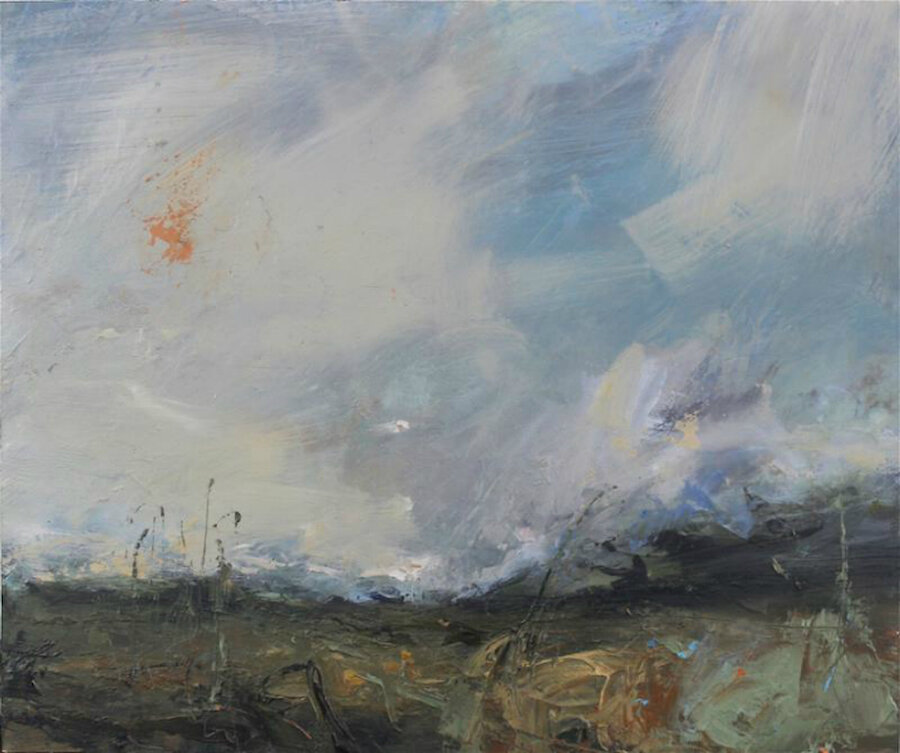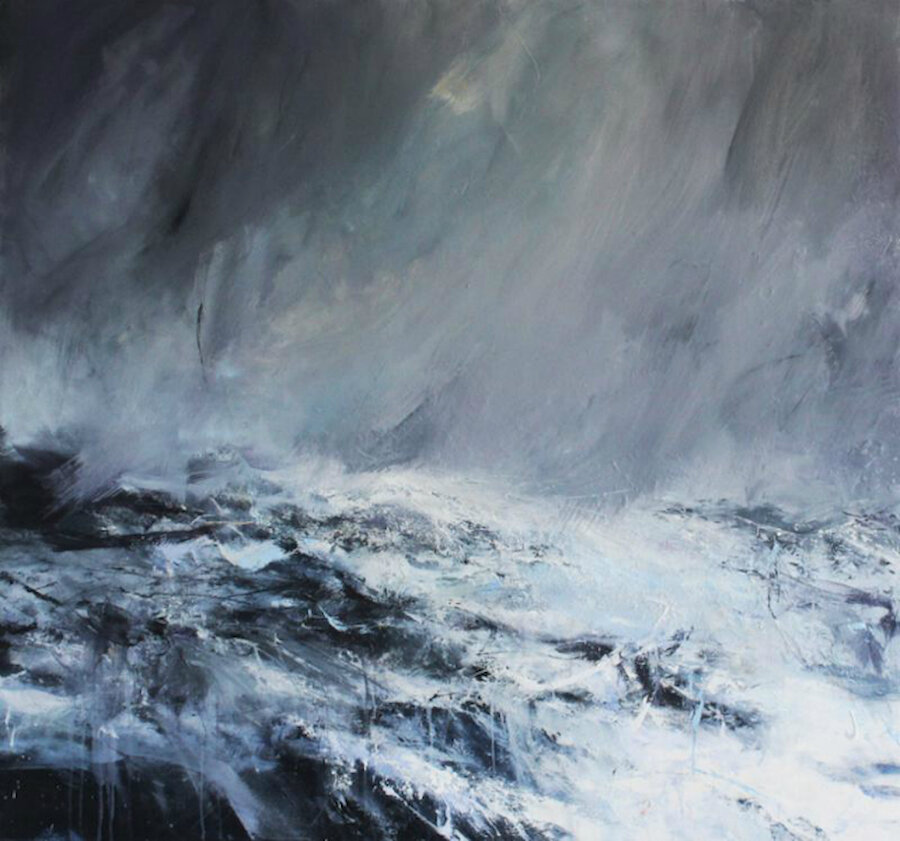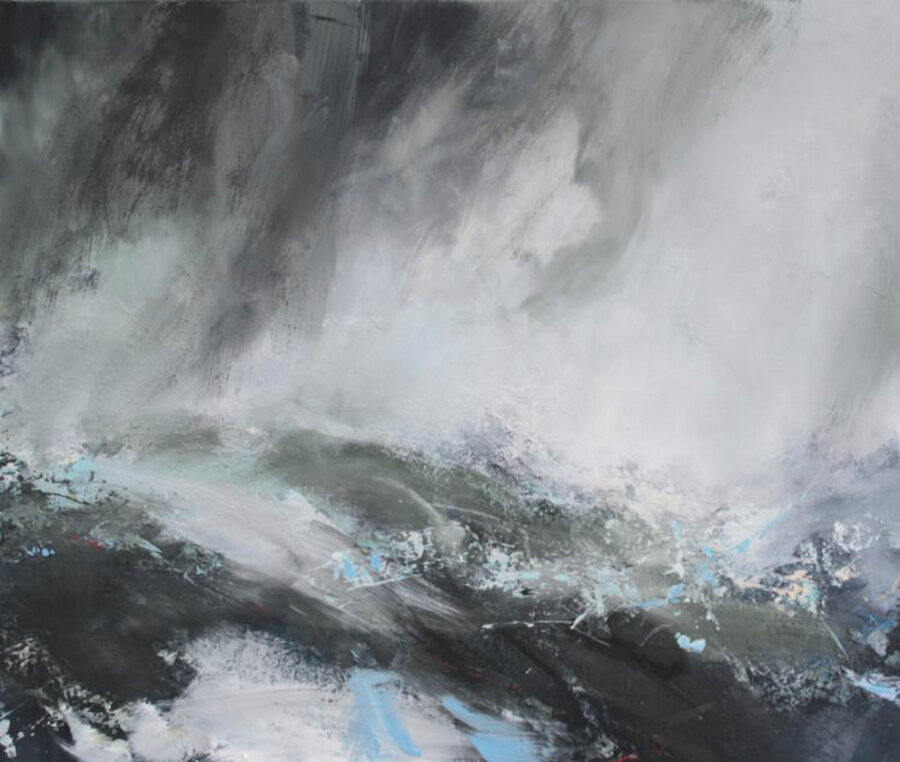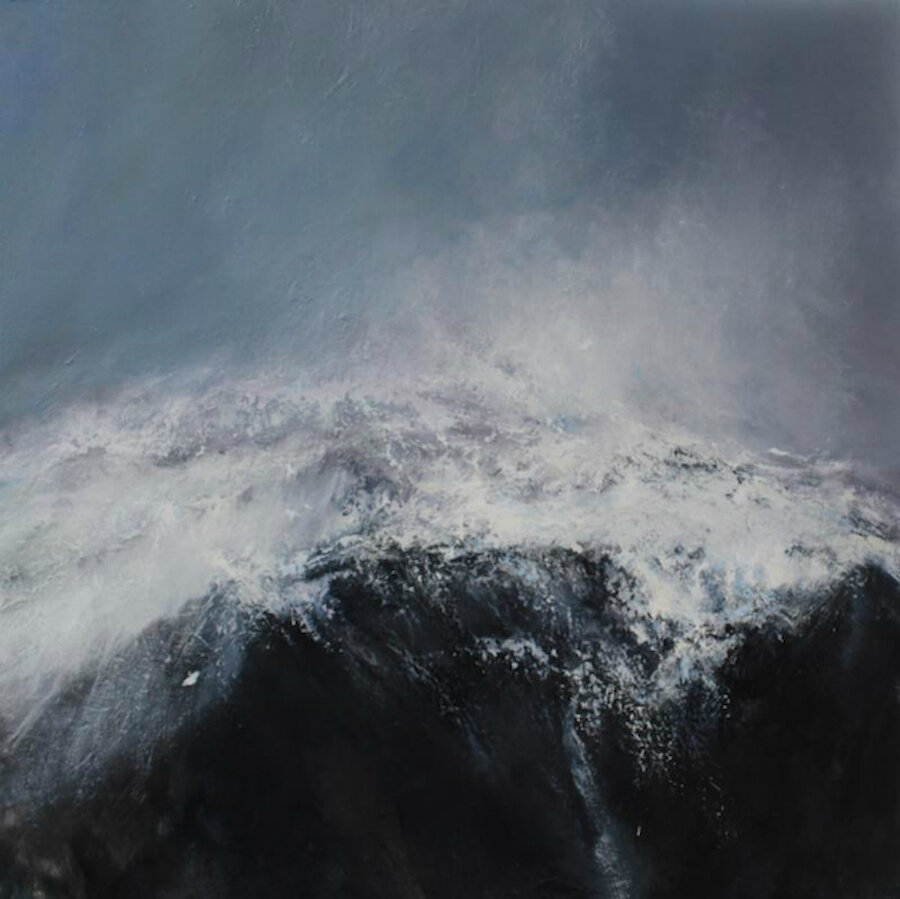Shetland is home to many practising artists and one of them is Dr Janette Kerr, widely admired for her dramatic and energetic seascapes, who spends around half of the year in the islands and about half in Somerset. Janette’s latest exhibition, entitled “North”, is at Cadogan Contemporary, an independent art gallery at 87 Old Brompton Road in South Kensington, London.
The show is formed of two bodies of work. One records a three-week period that Janette spent on board a three masted schooner sailing up the coast of Svalbard in Norway up to the Arctic Circle; the other derives from Shetland.
Janette is a painter of the northern landscape, a foul-weather artist who enjoys being out in, and working from, the landscape at its extremes. Although her work is influenced by the Romantic tradition, her practice is contemporary and experimental. She doesn’t seek to create meticulous studies of the landscape, preferring instead to respond to what is sensed rather than what is seen. Her paintings explore the boundaries between representation and abstraction whilst embodying the power and immediacy of both land and sea.

